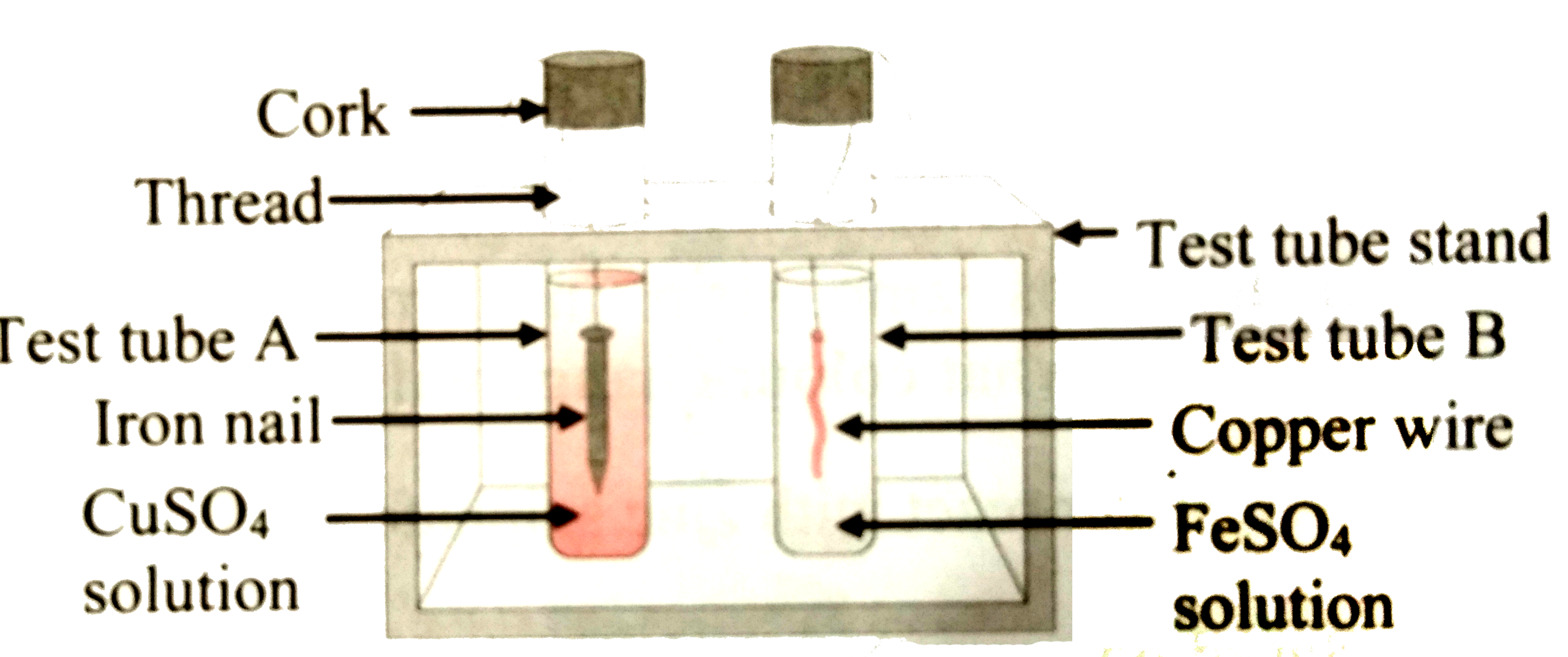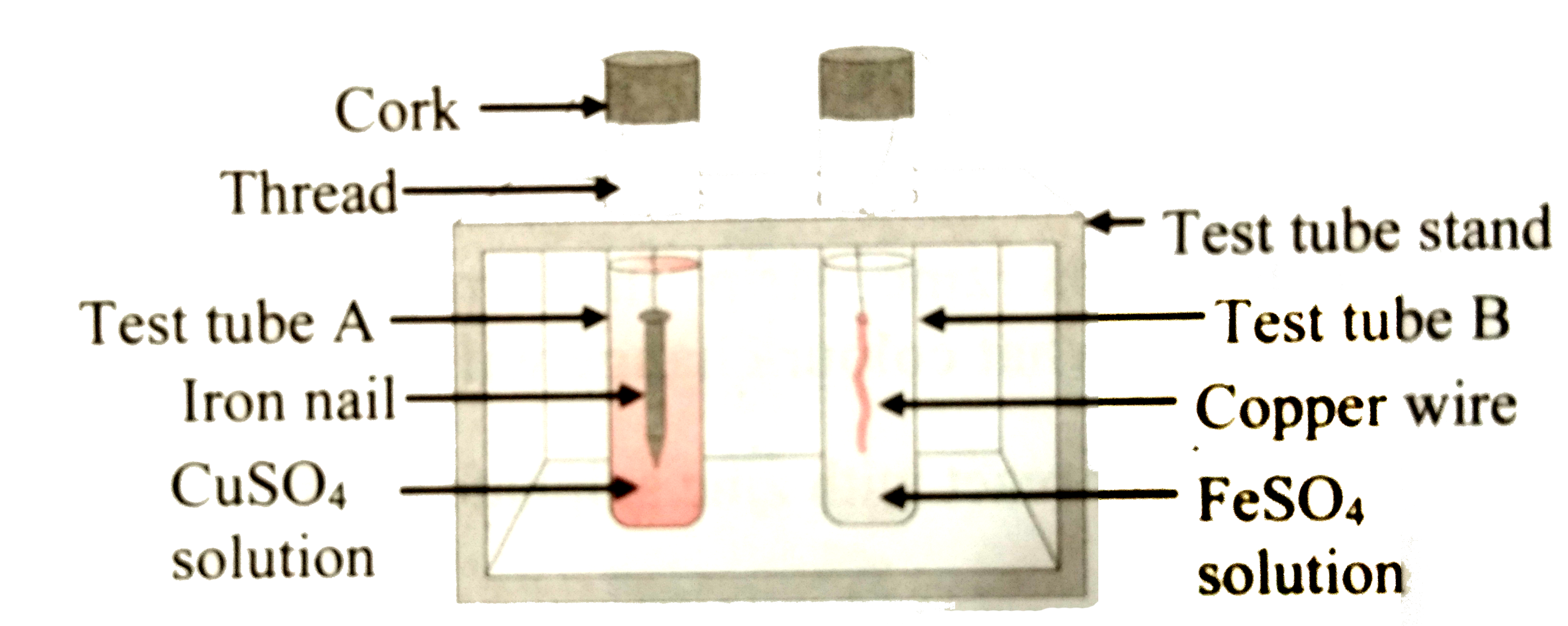Study the given experimental set-up.

If in test tubes I and III, black residue was obtained and in test tubes II and IV, no change was observed, then metals P,Q,R and S could be respectively
Al,Cu,Pb,Ag
Pb,Cu,Ag,Al
Zn,Al,Cu,Ag
Zn,Cu,Al,Ag
The correct Answer is:D
Black residue is obtained in test tubes and III i.e., iron gets displaced in test tubes I and IIl Therefore, metals P and R should be more reactive than iron. No change is observed in test tubes II and IV hence, metals Q and S should be less reactive than iron.
Topper's Solved these Questions
Similar Questions
Knowledge Check
Study the given experimental set-up and answer any four questions from (i) to (v) given below.
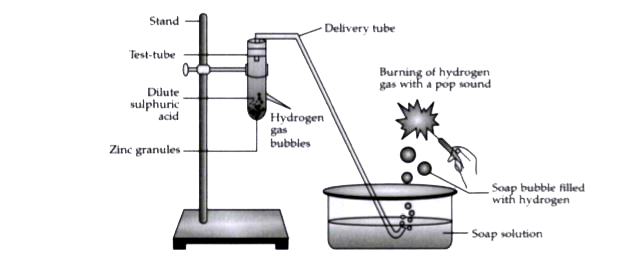
How will you test for the gas evolved ?ABring a glowing splint near test tube, it will reignite.BPlace a piece of moist litmus paper in a test tube of this gas, it turns red.CBring a burning splint near the opening of a test tube containing this gas, a popping sound occurs.DSmell the gas, it produces smell of rotten eggs.A student performed the first set of experiments with four test tubes containing solutions and metal pieces as indicated in the figure. In the second set of experiments, the metal pieces are interchanged between test tubes P and Q and also between test tubes R and S.

In which test tube(s), no reaction will occur in both sets of experiments ?AP and QBRCSDR and S2mL of ethanoic acid was taken in each of test tube I and test tube II. A red litmus paper was introduced in test tube I and a pH paper was introduced in test tube II. The experiment was performed by four students A,B,C and D and they reported their observations as given below:

The correct set of observations was made by the student:AABBCCDD
Study the following experimental setup. Answer the questions that follow.
The set up was left for 2 days. What do you notice in the test tube having lime water solution? Justify
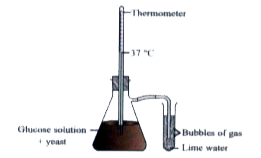
View SolutionStudy the following experimental set-up and answer the following questions.
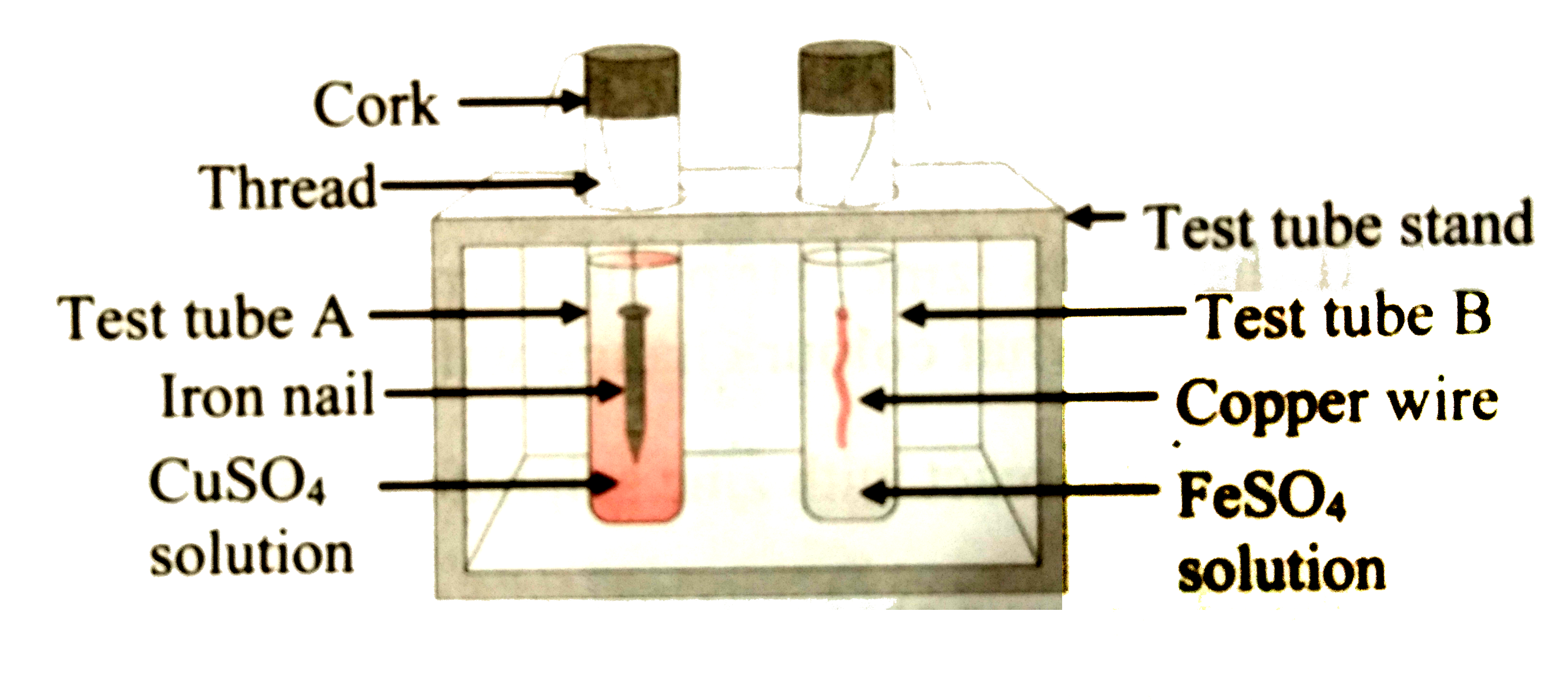
What will happen if copper sulphate solution in test tube A is replaced by magnesium nitrate solution?
View SolutionFour test tubes were taken and marked A, B, C and D respectively. 2 mL of solution of Al2(SO)3 in water was filled in each of the four test-tubes. Clean piece of metal zinc was placed in test tube A, clean iron nail was put in test tube B, clean copper wire was placed in test tube C and a clean aluminium wire was placed in test tube D. What colour change would you observe in all the four tubes ?
View SolutionA student added a piece of zinc metal each to four different test tubes containing different solutions as given below. The test tube in which no reaction was observed, contains
View SolutionStudy the given experimental set-up and answer any four questions from (i) to (v) given below.
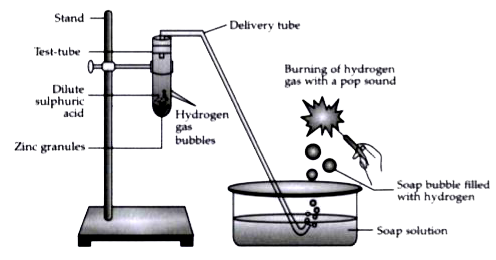
The above experimental set up shows reactions between metal and _______.
View Solution
